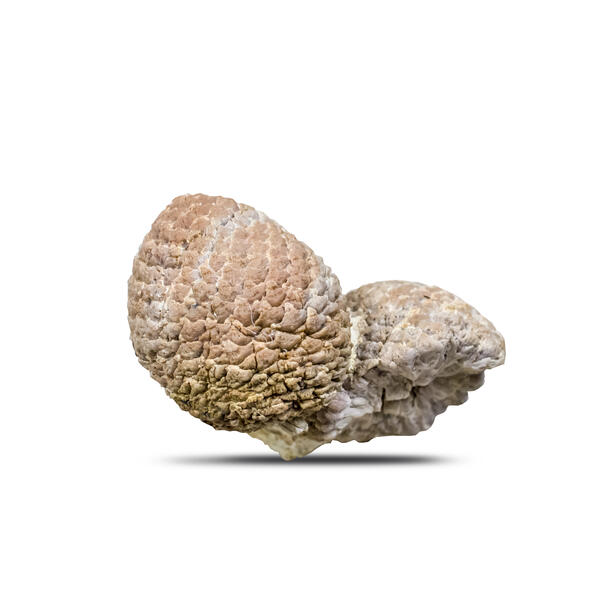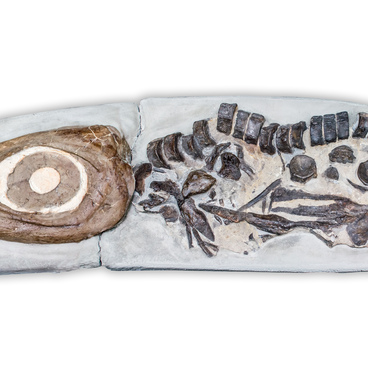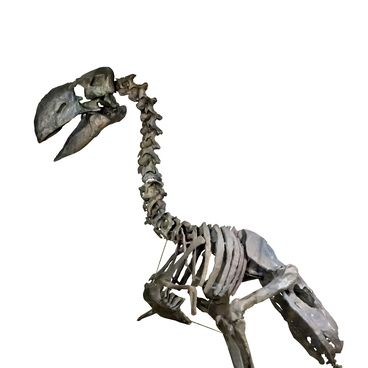Patagonia is a geographical region in South America. It covers the territory of Argentina and Chile, includes the Andes mountain range in the west and south, as well as plateaus and plains in the east. 160 — 180 million years ago, Patagonia was a subtropical landscape and was covered with dense forests. They consisted mainly of Araucaria — ancient coniferous trees. The volcanic eruption in this region left an entire forest buried under a layer of ash. Due to chemical reactions, fragments of the trunks and cones of Araucaria fossilized over time and survived in this form. Soil erosion led to most of them being on the surface, so such fragments are often found.
The genus Araucaria got its name from the Arauco area in southern Chile. It was here that the first trees of this species were discovered in 1782.
The ancient Araucaria were giant trees. They reached 100 meters in height; the diameter of the trunk was three meters on average. They matured by the age of 300. The age of the oldest trees found was about 2000 years.
One of the largest clusters of fossilized Araucaria in Argentine Patagonia is the Cerro Cuadrado Forest. It was discovered in 1923 by the botanist Anselmo Windhausen, who noticed that the locals collected fossils and believed in their magical properties. Windhausen found that this forest was formed about 160 million years ago. It consisted mainly of two types of trees: Pararaucaria patagonica and Araucaria mirabilis.
Besides the fragments of tree trunks, giant cones of the ancient Araucaria were also preserved in Cerro Cuadrado. Since these plants were dioecious, that is, they had a different sex — their fruits were divided into male and female. Both weighed up to one and a half kilograms. But the female cones had a rounded shape, and the male ones were more elongated, up to 20 centimeters in length. They were probably edible and could have been eaten by herbivorous dinosaurs.
Modern Araucaria — descendants of ancient petrified trees — grow in America, Australia, and New Guinea. In the Crimea and the North Caucasus, they are planted in parks and botanical gardens.
The genus Araucaria got its name from the Arauco area in southern Chile. It was here that the first trees of this species were discovered in 1782.
The ancient Araucaria were giant trees. They reached 100 meters in height; the diameter of the trunk was three meters on average. They matured by the age of 300. The age of the oldest trees found was about 2000 years.
One of the largest clusters of fossilized Araucaria in Argentine Patagonia is the Cerro Cuadrado Forest. It was discovered in 1923 by the botanist Anselmo Windhausen, who noticed that the locals collected fossils and believed in their magical properties. Windhausen found that this forest was formed about 160 million years ago. It consisted mainly of two types of trees: Pararaucaria patagonica and Araucaria mirabilis.
Besides the fragments of tree trunks, giant cones of the ancient Araucaria were also preserved in Cerro Cuadrado. Since these plants were dioecious, that is, they had a different sex — their fruits were divided into male and female. Both weighed up to one and a half kilograms. But the female cones had a rounded shape, and the male ones were more elongated, up to 20 centimeters in length. They were probably edible and could have been eaten by herbivorous dinosaurs.
Modern Araucaria — descendants of ancient petrified trees — grow in America, Australia, and New Guinea. In the Crimea and the North Caucasus, they are planted in parks and botanical gardens.



